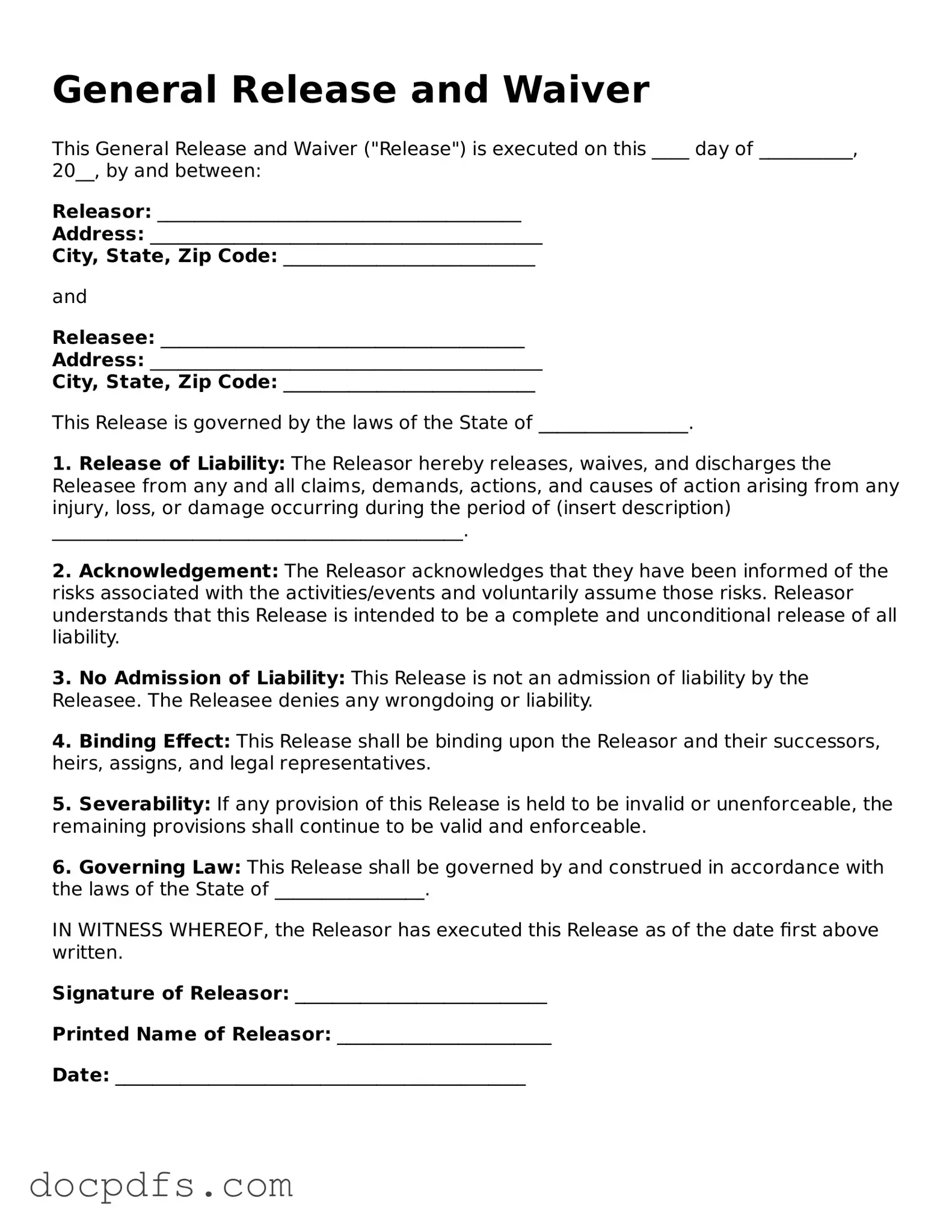The General Release and Waiver form serves as a crucial legal tool for individuals and organizations looking to protect themselves from future claims or liabilities. By signing this document, a person agrees to relinquish their right to pursue legal action against another party for any past, present, or future claims related to a specific activity or circumstance. This form is often used in various contexts, such as during events, recreational activities, or business transactions, where there is a risk of injury or loss. It outlines the rights being waived and typically includes language that emphasizes the understanding and acceptance of potential risks involved. Importantly, the General Release and Waiver form helps clarify the responsibilities of all parties involved, ensuring that everyone is on the same page regarding liability. It can foster a sense of security, allowing individuals to participate in activities without the looming fear of legal repercussions. However, it’s essential for anyone considering signing this form to fully comprehend its implications and ensure that it meets their specific needs.
